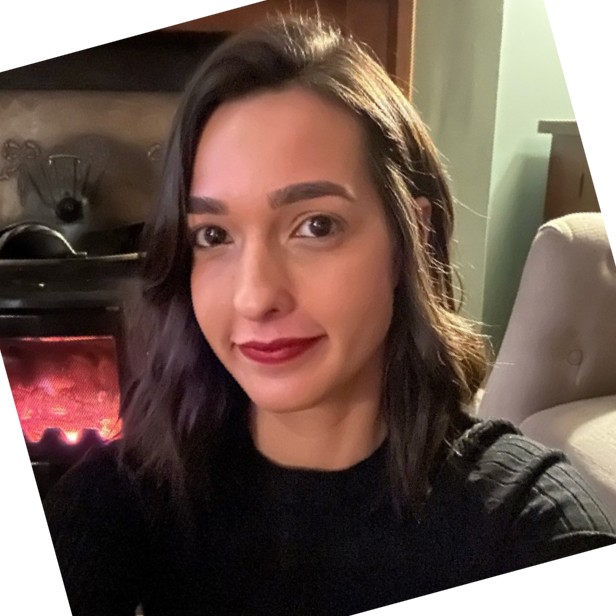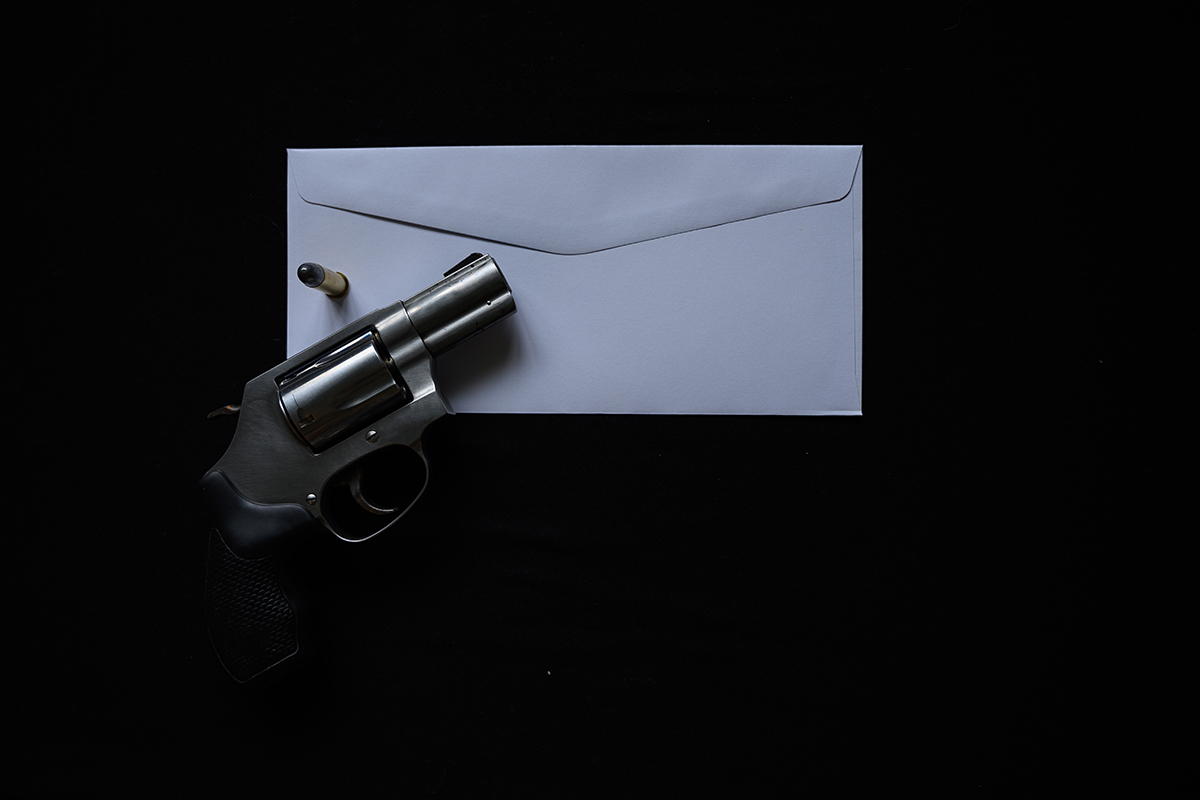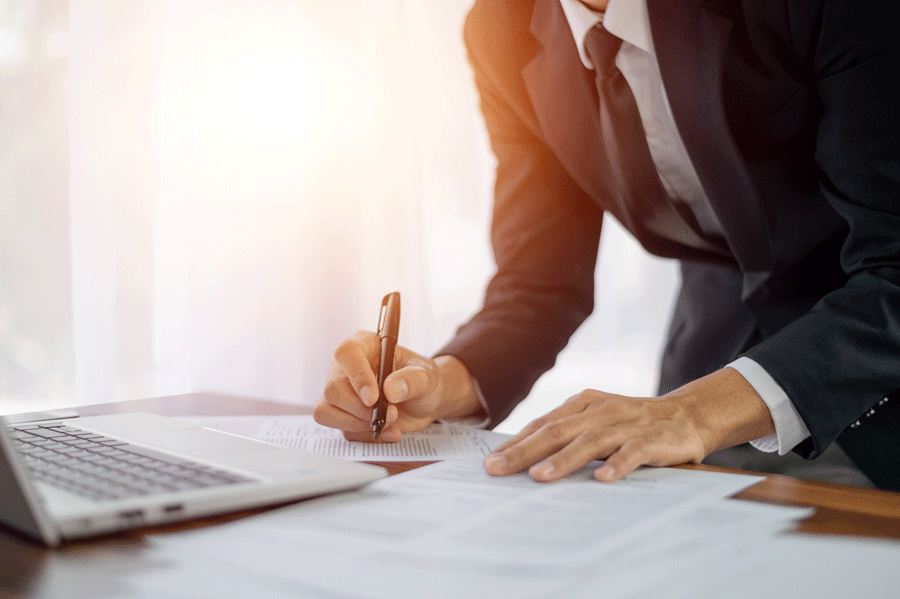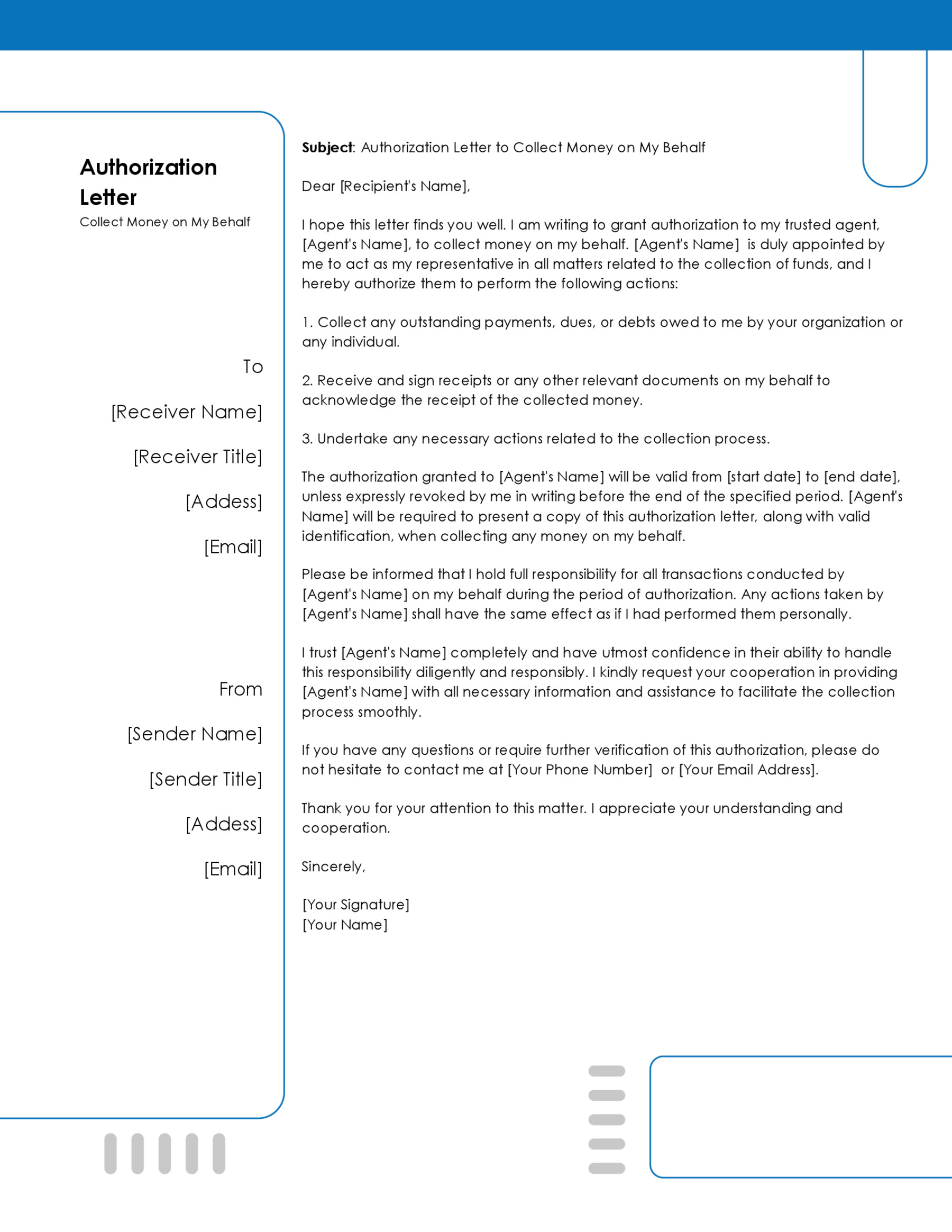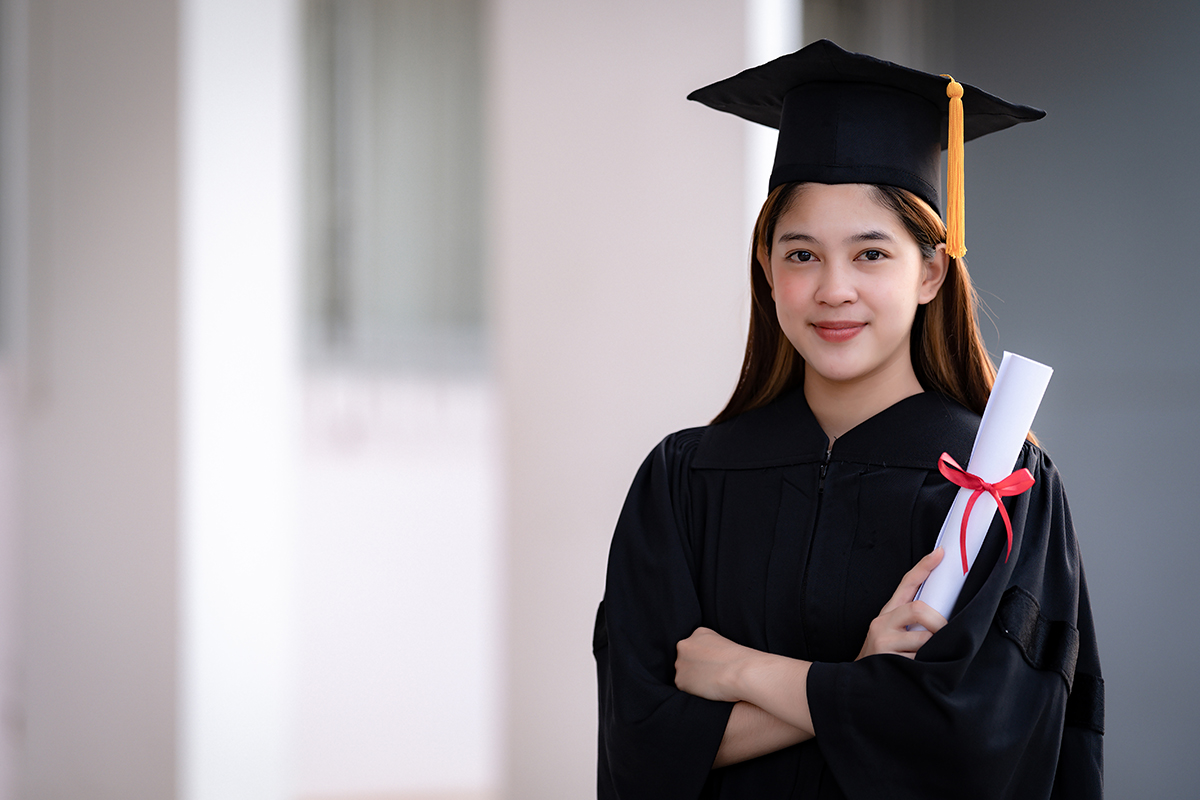A condolence letter is an informal letter aimed at expressing your sympathy towards an acquaintance who has lost their loved one as a way of comforting them for their loss.
It may be hard to find the right words to say or write when an acquaintance loses a loved one. That is why it is essential to know what a condolence letter is and how you can write it.
If you know the acquaintance’s loved one, then writing this letter would be simple. This is because you will be able to write the letter based on the experience you shared with them. However, if you do not know their loved one, it is still appropriate to find a way and add a personal touch to the letter to show sympathy.
A condolence letter entails having a written message for your acquaintance, and this is what a written message does:
- It indicates that you have recognized the loss your acquaintance is experiencing
- Honors and respects the deceased person
- Acknowledges your acquaintance’s grief as valid
Samples and Examples
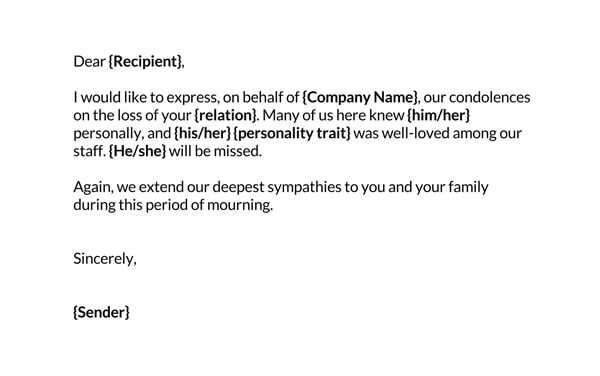
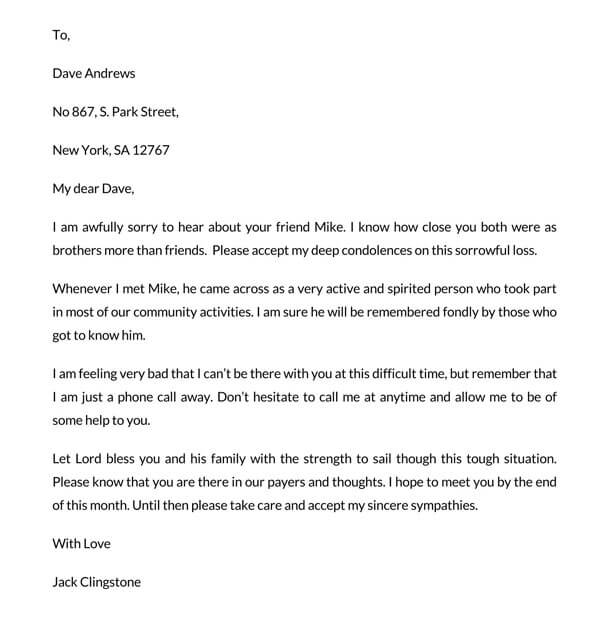
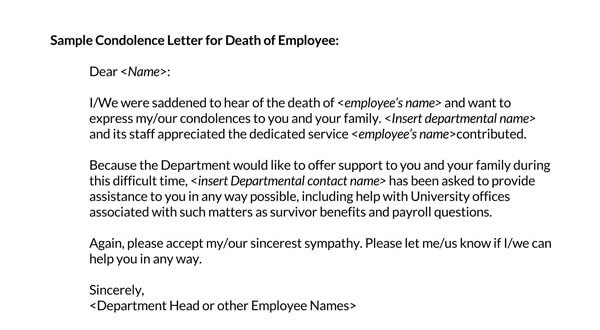
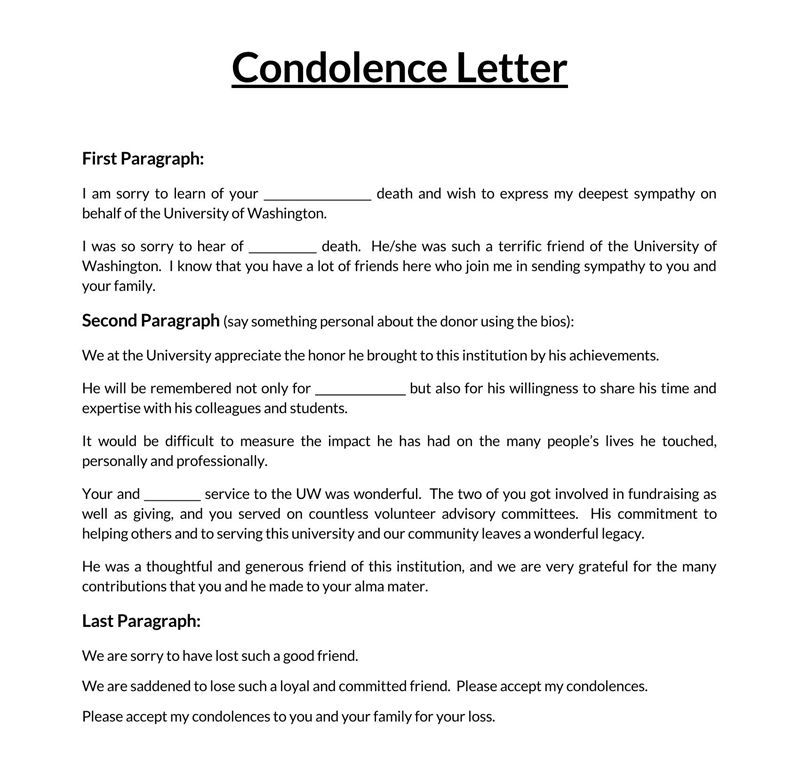
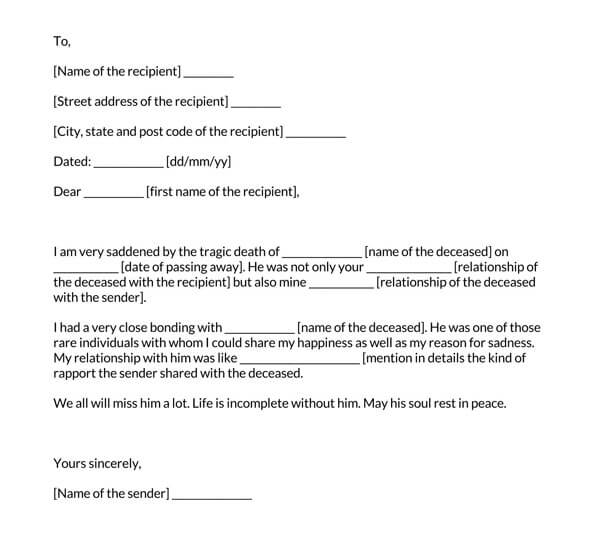
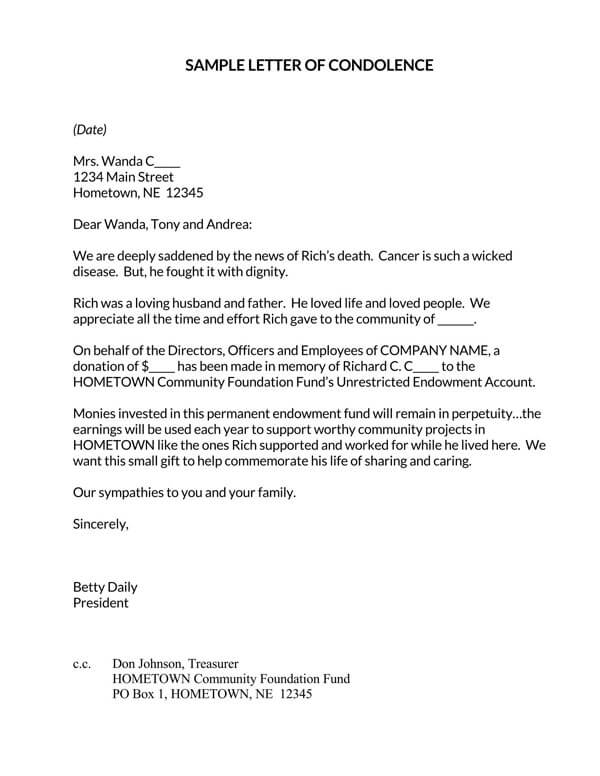
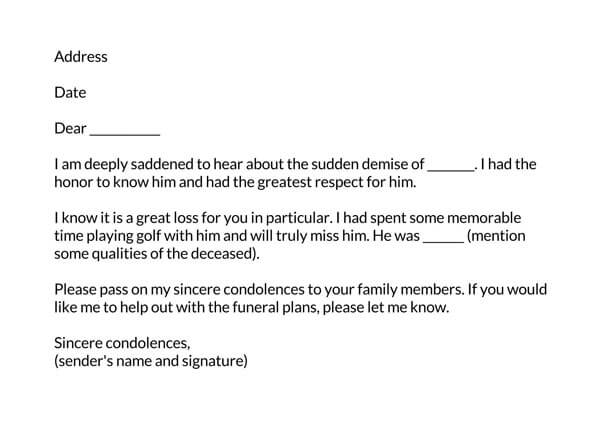
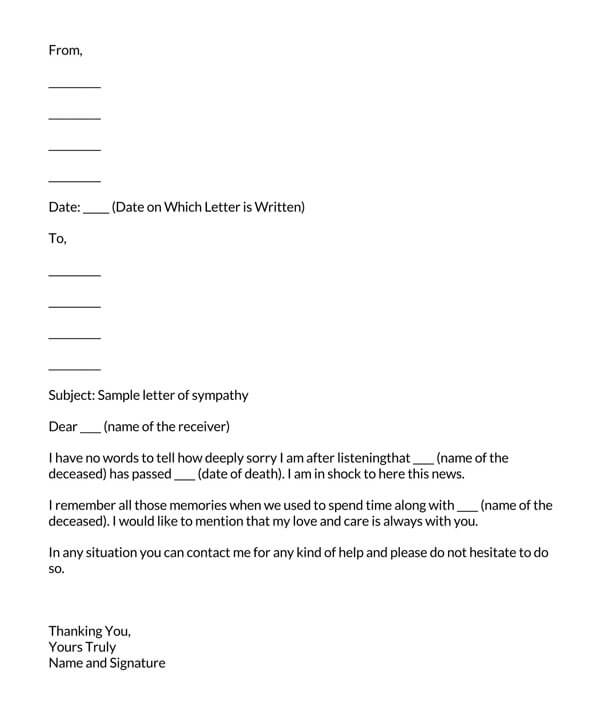






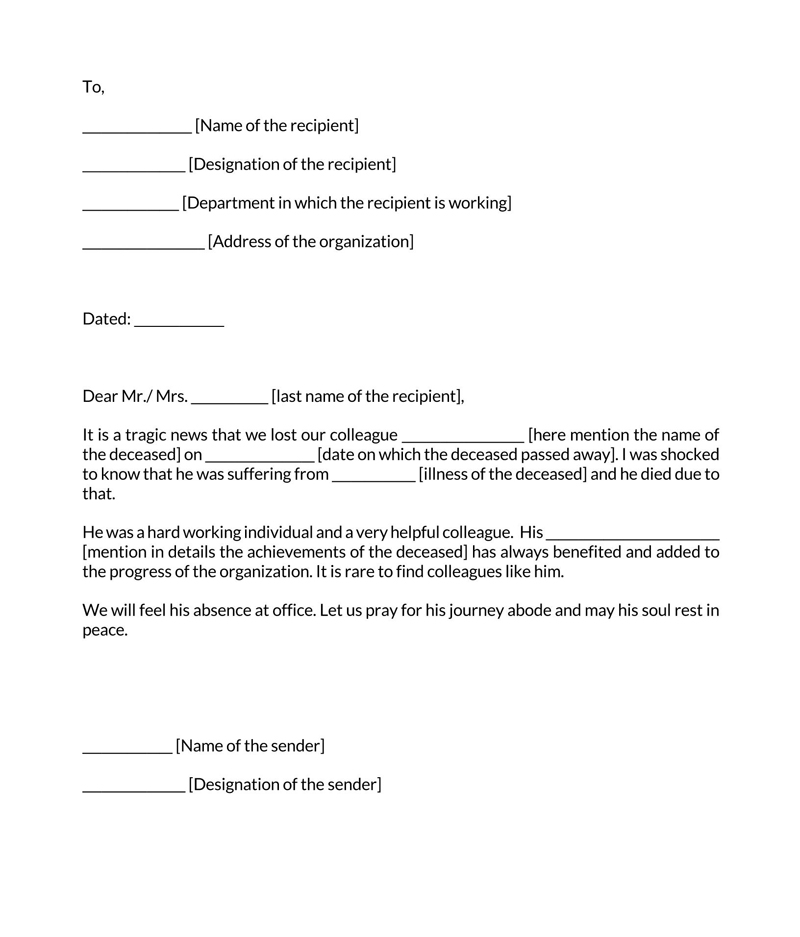



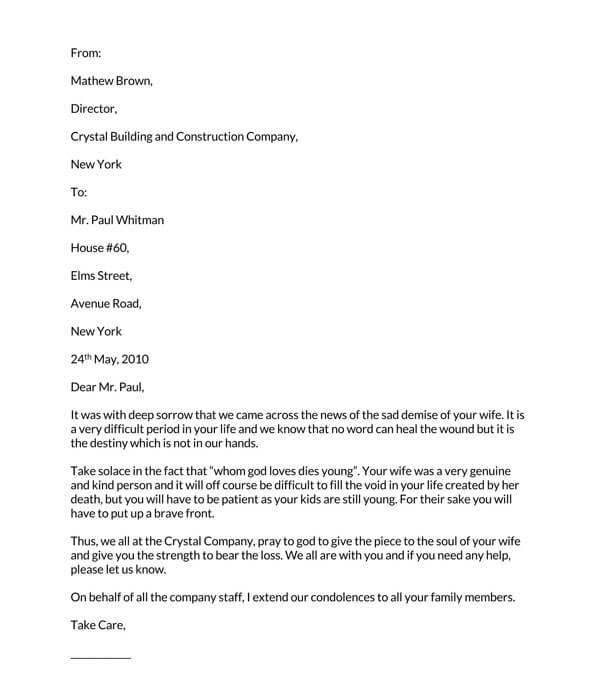

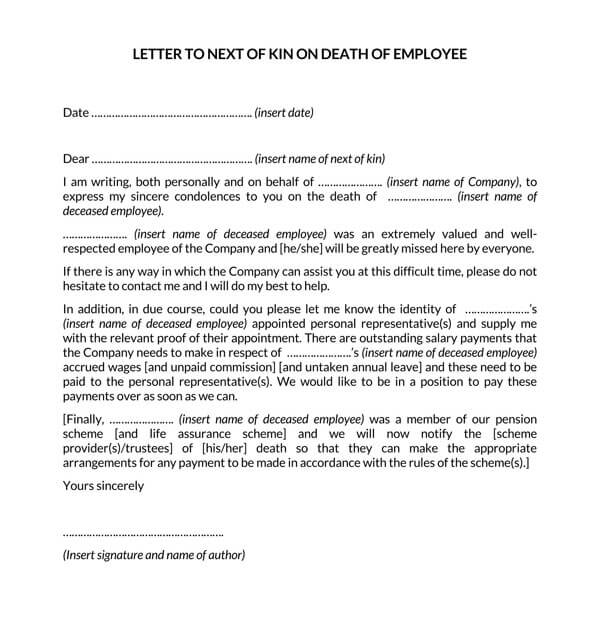

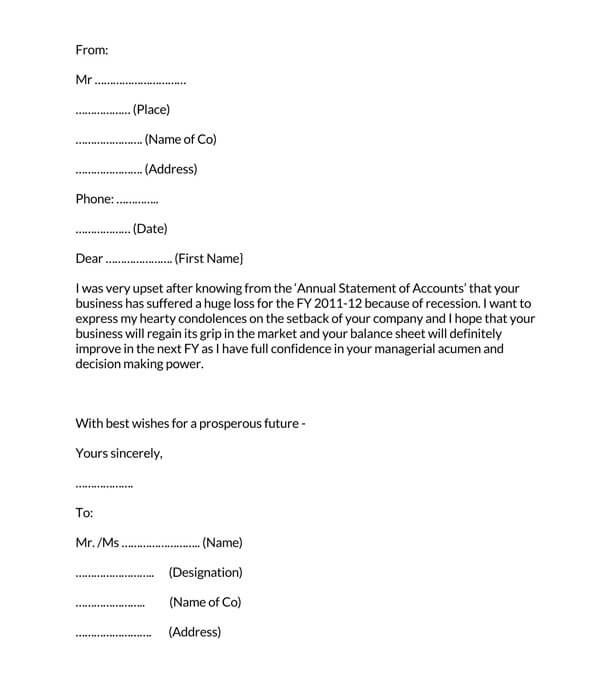


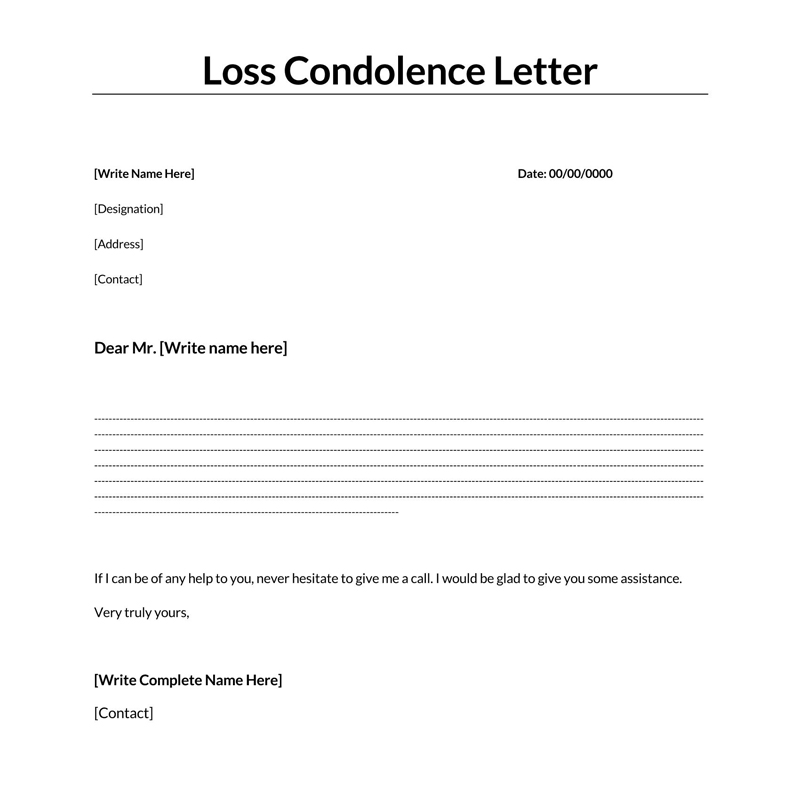
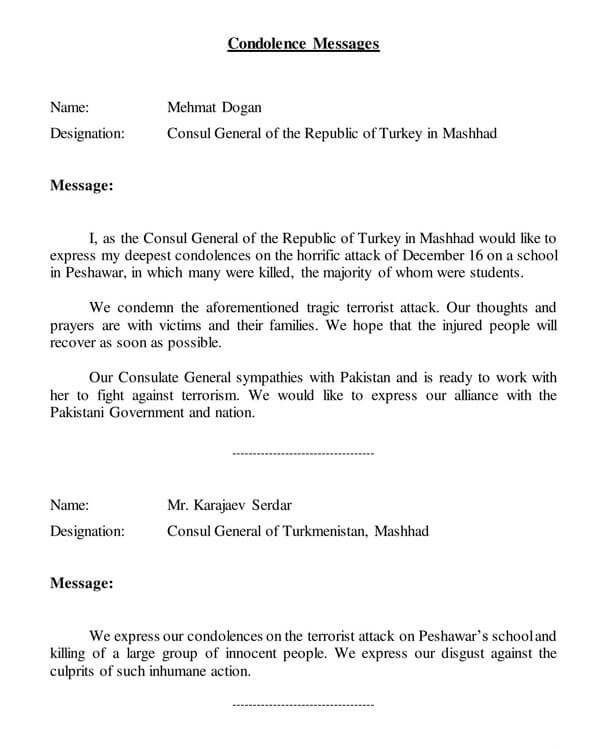






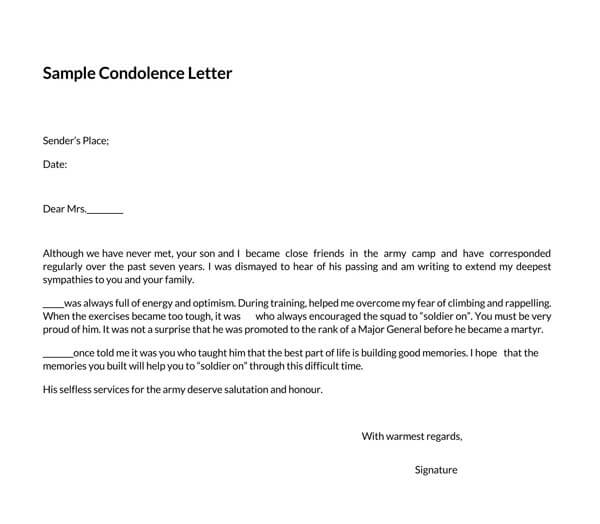
Reasons to Write a Condolence Letter
There are reasons why you should write this letter to an acquaintance who has lost a loved one.
Here are three crucial reasons for you to write a condolence letter:
To offer them help
Your acquaintance is experiencing loss and might need help with lots of different things. Offering them help, like bringing food to them, is a way of being empathetic and polite. It would be best if you were specific about your help to make your letter more personalized.
To remain in contact
Choosing to write the letter will make you remember that you need to remain in contact with your acquaintances and let them know that you are there for them by continuing to be in contact. You should mark your calendar to remind yourself to reach out to your acquaintance after a while.
This can be done after either 3 or 6 months. People grieve differently, which means having someone to comfort them even after all the friends and family are back to live their lives is helpful and an important reason for writing the letter.
To comfort them
This letter is an appropriate way of showing your concern, especially if you are close to the deceased person. Your acquaintance will be comforted by the thoughts of your concern, care, and sympathy.
note
If you are not closely related to or properly acquainted with the person you are writing a condolence letter to, it is best to avoid writing the letter, as it will not help to comfort them or display your concern and care.
Condolence Letter Vs. Sympathy Note
Although both a condolence letter and a sympathy note aim to show concern and care towards your acquaintance who has just lost their loved one(s), these two are different. The letter is longer than a sympathy note.
It includes about two paragraphs, while a sympathy note includes a few sentences. Also, you can choose to include a sympathy note when sending a condolence letter.
note
It is vital to write a condolence letter but not immediately after the loss. It is also essential for you to send a sympathy note a few months down the line to check on your acquaintance’s welfare.
When, Where, and How to Use a Condolence Letter
When determining the appropriate time, location, and format for a letter of condolence, take into account the following:
When
As mentioned, sending your letter immediately after the loss does not sound or seem sincere. Being late is also not an option. It is best to send the letter within the first two weeks of the loss. If you are late, you need to send them a note to indicate your concern and sympathy. The best thing is to ensure that you reach out to your acquaintance, even though you might be late.
Where
It is also necessary to understand where to deliver the letter after writing it. For example, you can drop off your letter during the funeral services. Most services have a basket or collection box for this purpose.
You can also choose to mail your letter. However, keep in mind that they may not open the mail soon and discover your letter later while encompassed by the deceased’s loss, sadness, and exercises.
How
Your letter should be handwritten on paper using a nice pen instead of typed, as it would seem uncaring. It is also appropriate to write your message on a card by hand. The letter should sound sympathetic, and this can be achieved by writing the same way you usually talk.
Consider the recipient’s emotions and express your feelings without being too fancy, like writing a poem or a song verse.
Writing a Condolence Letter
Writing a sincere and sympathetic condolence letter to an acquaintance who has lost their loved one(s) can be challenging.
However, here is a guide on how you can craft and write such a condolence letter :
Acknowledge loss/refer to the deceased by name
When writing the letter, it is not a good idea to avoid the subject of death due to discomfort. You need to mention the loss openly and address the deceased by their name to personalize the letter. It is also not a good idea to use euphemisms when addressing the loss your acquaintance is experiencing.
EXAMPLE
I am sorry to hear about the death of Albert.
Express sympathy
It would be best to express your sympathy intensely, as that is the main aim of writing the letter. Express your sympathy for their loss as a way of comforting them.
EXAMPLE
I cannot imagine what you are going through, but I am always here for you.
Mention the deceased in specific terms
When addressing the deceased, you should highlight their attributes and positive traits. This kind of information should be provided in detail, as it helps to comfort the family.
EXAMPLE
Albert was outgoing and creative, which made him friendly with many people.
Include a favorite memory
If you know the deceased person, you can also add a favorite memory that you share with them to bring positivity to the grieving family.
EXAMPLE
I remember how Albert and I met at the fishing camp back in 2011. He was polite and friendly towards me.
Remind the bereaved of their loved one’s strength
In your letter, you also need to remind the bereaved about their loved one’s strength while they were alive. This will help ease your acquaintance’s pain by giving them something positive to think about.
EXAMPLE
Albert was a selfless person who constantly aimed to bring out the good in people.
Offer help to the bereaved
Your letter should also include your offer to help and comfort them through the hard times they are experiencing. You should not use the general statement, “Please let me know if you need anything.” Try to be more specific about the kind of help you are offering the bereaved.
EXAMPLE
I am here if you need any help with organizing the wake. In addition, I can help with the guests or any other funeral preparations.
This way, they will not be uncomfortable in case they need help from you and they will not reach out for something that you cannot accomplish.
Close with thoughtful hope or wish
You should end the letter with a thoughtful statement before signing off. Try to end your letter in a way that signifies more involvement in their life. This can be achieved by avoiding using ordinary words like sincerely’ instead of thoughtful hopes or wishes such as “Always in my thoughts and prayers.” Such expressions are personal and thoughtful.
Using a Condolence Letter Sample
Through the procedure of writing the letter, a sample is necessary to guide the writing. The sample will provide you with the information and examples you need to craft an appropriate and sincere condolence letter. In addition, you will be more comfortable with your letter being comforting and not offensive if you have a sample that provides you with the knowledge you need to write it.
Condolence letter sample
Dear Samantha,
I was heartbroken to hear about the passing of your mother, Elizabeth. I cannot begin to imagine the depth of your sorrow, but I wanted to reach out and express my deepest condolences to you and your family during this incredibly difficult time.
Your mom was truly one of a kind. I will always remember her warm smile and the way her laughter could light up a room. The afternoon we spent in her garden last summer, listening to her stories and enjoying her famous lemonade, is a memory I will cherish forever. She had a gift for making everyone feel welcome and loved, and it was evident in every interaction I was fortunate enough to have with her.
In this moment of loss, I hope you can take some comfort in knowing how much she was loved by all who knew her and the lasting impact she made on our lives. Elizabeth was a remarkable woman, and her spirit, kindness, and joy for life will never be forgotten.
Please know that I am here for you, Samantha. Whether you need someone to help with the funeral arrangements, take care of errands, or simply be there to listen, I am just a phone call away. You are not alone in this, and I want to support you in any way I can.
In the days ahead, may you find strength in the love of family and friends and comfort in the memories of your time spent with your mom. She was an incredible person, and I feel privileged to have known her.
Sending you all my love and heartfelt sympathy,
Alex
Condolence Letter Template
Dear [Recipient’s Name],
I was deeply saddened to hear about the passing of [Name of the Deceased], and I want to express my sincerest condolences to you and your family during this difficult time. [Name of the Deceased] was a remarkable person who touched the lives of many, and their loss is felt by all who knew them.
In the time that I knew [Name of the Deceased], I was always struck by [mention a positive trait, e.g., their kindness, generosity, sense of humor, dedication, etc.]. [Share a personal memory or anecdote that highlights this trait, providing a glimpse into the character and impact of the deceased on those around them.]
I understand that words can hardly provide comfort in moments of such profound sorrow. However, I hope you find some solace in knowing that [Name of the Deceased] left an indelible mark on the lives of those they encountered. Their legacy will undoubtedly live on through the memories we cherish and the stories we share.
Please know that my thoughts are with you and your family. If there’s anything I can do to support you during this time, whether it be helping with arrangements, running errands, or simply lending an ear, do not hesitate to reach out.
In this time of grief, may you find strength in the love and support of those around you, and may the memory of [Name of the Deceased] bring you peace and comfort in the days ahead.
With heartfelt sympathy,
[Your Full Name]
Analysis
This sample letter of condolence is effective due to its compassionate approach and its focus on shared memories and the individual’s impact. By recounting specific, positive interactions, the letter creates a personal connection with the bereaved, offering comfort through the remembrance of joyful times. The acknowledgment of the individual’s unique qualities and the void their passing has created underscores a deep understanding of the loss, facilitating a shared mourning process. The explicit offer of support not only provides practical help but also conveys a sense of solidarity, emphasizing that the bereaved is not alone during this challenging period. This gesture of reaching out, combined with the expression of shared grief, helps to create a supportive space for the recipient. Overall, the letter’s emphasis on personal memories, its recognition of the individual’s impact, and the offer of assistance make it a heartfelt and comforting message to someone experiencing loss.
Tips for Writing a Condolence Letter
These tips will ensure that you write an appropriate and sympathetic letter, reducing the chances of offending your acquaintance during this sad time.
Following are some tips that you can observe when writing a condolence letter:
Choose a handwritten letter or a text message
Before crafting the letter, you need to decide between either a handwritten letter or a text message. A handwritten letter may be a beautiful gesture but slow when it comes to reaching them; on the other hand, a text message may be a faster way of delivering the information but will not display much concern and care.
You should send them both a handwritten letter and a text message. A text message or email should be simple, indicate your condolences and request their mailing address. A handwritten letter can be accompanied by flowers later. It is an excellent way of showing sympathy since it implies a human touch, which is necessary during loss and grief.
Keep your note brief and short
Even though you look sympathetic, your acquaintance’s emotional state does not allow them to read a very long letter.
It is best to keep your note brief and short. Write about two paragraphs and send the letter within two weeks of the loss. Your acquaintance will appreciate a short letter that highlights your care, concern, and sympathy. Always ensure that you send them a follow-up note afterward.
Remain straightforward but restrained
When expressing your condolences, it is best to be straightforward but restrained. Do not be dramatic with the words you use. You can write, “I am sorry for your loss,” instead of, “I am devastated by your loss.” It is also best to avoid expressing your emotions more than the acquaintance and their family experiencing the loss, even if you know the deceased person. Being simple is better and more sympathetic.
Speak from heart
Sharing your condolence message should be done in a manner that shows that you are speaking from the heart. The whole idea is to personalize the letter in a way that communicates your genuine emotions. This can be done by mentioning the deceased’s name when writing the letter and offering the bereaved a specific type of help through that difficult time.
Mention the deceased’s qualities
When writing this letter, another tip you should observe is highlighting the deceased person’s qualities to indicate honesty and care. Your letter should include positive qualities and attributes you know or have heard about the deceased.
EXAMPLE
You can mention that the deceased was talented in a particular area.
This is a way of being supportive and showing you care about your friend who is going through a loss. Honesty about your condolence will also be displayed by sharing beautiful memories with your grieving friend or acquaintance about the deceased.
Key Takeaways
- A condolence letter is crucial as it shows your concern and care by expressing your sympathy towards your acquaintance who has lost their loved ones.
- Sending this letter to your acquaintance is the best way to offer them help, keep in touch with them, and comfort them.
- It is best to avoid sending the letter immediately or way later after the loss has happened. Instead, send the letter within two weeks of the loss.
- Following the procedure and tips for writing the letter will help you craft an appropriate letter to comfort your acquaintance during their grief.
